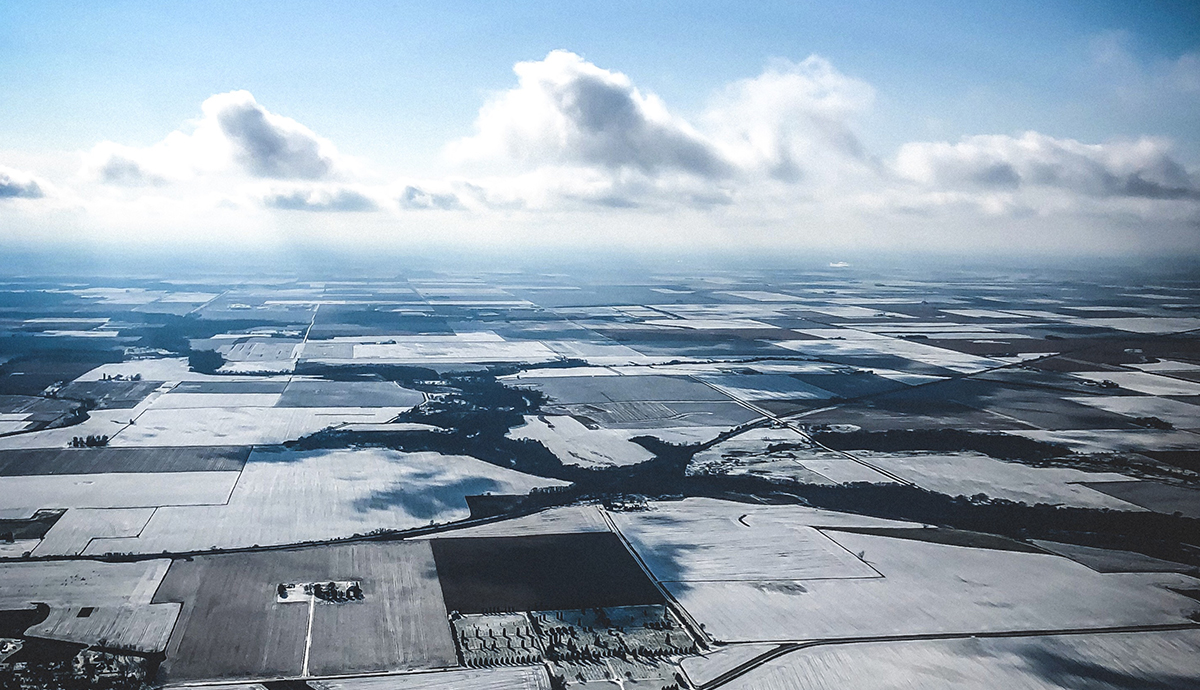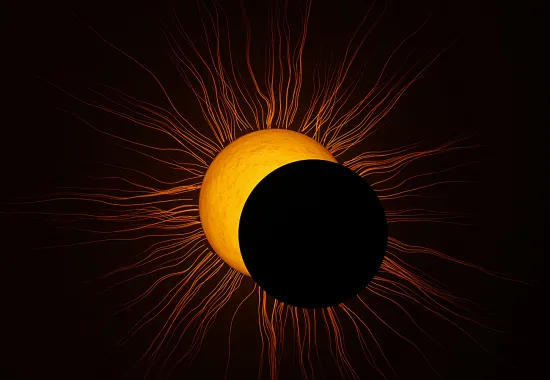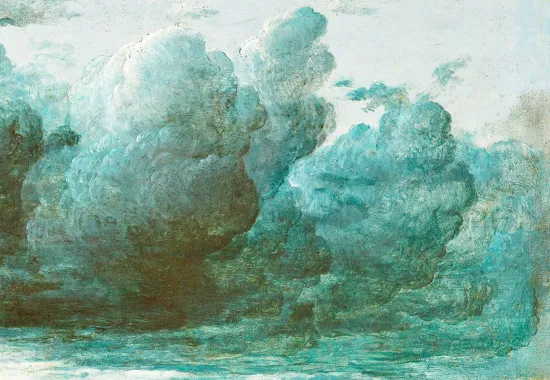Geography at the End of the World from issue 298.1
 At St. Paul’s Parochial School we were taught by the Sisters of Charity of Halifax, causing some of us to question (if not lament) why the nuns would descend upon the Boston Diocese from a city way up in Nova Scotia. Wedged between daily religious instruction, which required the recitation of memorized Catechism questions, exercises in the Palmer Penmanship Method, and harrowingly competitive spelling bees, the sisters provided us with an introduction to literature. We learned about rhyme and meter in poetry (“Under the spreading chestnut tree / The village smithy stands”), and regarding fiction, we were informed that the three primary elements of a story are character, plot, and setting. It seemed a serviceable if rather axiomatic definition, and it wasn’t until college that I began to have suspicions while reading James Joyce.
At St. Paul’s Parochial School we were taught by the Sisters of Charity of Halifax, causing some of us to question (if not lament) why the nuns would descend upon the Boston Diocese from a city way up in Nova Scotia. Wedged between daily religious instruction, which required the recitation of memorized Catechism questions, exercises in the Palmer Penmanship Method, and harrowingly competitive spelling bees, the sisters provided us with an introduction to literature. We learned about rhyme and meter in poetry (“Under the spreading chestnut tree / The village smithy stands”), and regarding fiction, we were informed that the three primary elements of a story are character, plot, and setting. It seemed a serviceable if rather axiomatic definition, and it wasn’t until college that I began to have suspicions while reading James Joyce.
Yet a great deal of fiction employs this holy trinity to good effect. However, I wonder if the emphasis isn’t skewed, if too many novels and stories are what we call “character driven” or (often in a derogatory tone) “plot driven;" I wonder if more credit should be given to setting. I wonder, sometimes, if stories are even possible without a clear sense of place, if particular characters and plots don’t rise up out of the ground as if they are vegetation that is produced by the particular attributes of the local soil and the climate.
I’m currently reading Ragtime with my students and I recall some years ago encountering an interview with E. L. Doctorow, who said he got the idea for the novel one day while he was sitting in his office, pretty much doing nothing. There was a photograph of a house pinned to the wall above his desk, which caused him to write what became the novel’s opening passage:
In 1902 Father built a house at the crest of the Broadview Avenue hill in New Rochelle, New York. It was a three-story brown shingle with dormers, bay windows and a screen porch. Striped awnings shaded the windows. The family took possession of this stout manse on a sunny day in June and it seemed for some years thereafter that all their days would be warm and fair.
From there, Doctorow’s story of America in the early years of the 20th century issues forth as though from a ticker tape. Borne upon this inexorable stream of simple declarative sentences, fictional characters interact with Doctorow’s rendition of historical figures, such as Houdini and Emma Goldman; there’s enough plot to satisfy (and probably shock) the fair sisters at St. Paul’s. I suspect that without that initial image of the house in New Rochelle, the story of the family—Father, Mother, Younger Brother, Grandfather, and Little Boy—might never have come into being.
Ten years ago I spent a few days on the Isle of Mull, which is part of the Inner Hebrides chain off the west coast of Scotland. Since then I’ve been carrying images of the island in my mind. No thought of characters, let alone plot, just images of sweeping green hills rising above the ocean, Tobermory and Fionnphort (the only two villages on the island), and a lot of sheep—a lot of sheep. I suspect I might never have written “The End of the World” had I not traveled to Scotland, taken the ferry from Oban to the Isle of Mull, and stayed in Tobermory and Fionnphort. My story is titled “The End of the World” because that’s the way the Isle of Mull felt, and it was a good place to be. The circumstances of my visit there were entirely different from those portrayed in the story; the places depicted are real (if rather muddled in my memory and what passes for imagination), but from that real-ness came the characters Anne, her deceased husband Hal, and their daughter Nuala. I’ve never known such people, though as I wrote the story they became as real to me as my own family. I believe they exist because I visited Mull; in fact, I suspect they belong there—have long inhabited the vast imaginative geography of the island. They were a story waiting to be told until I came along.
This suspicion is based on a chance discovery. After writing an early draft of the story, I realized that I didn’t know what the name Nuala meant—I liked it because it sounded Celtic. Through the wizardry of the internet, I quickly discovered that in Gaelic, Nuala means lamb. Of course, a Scotsman such as Hal MacRae, a painter who had grown up on the Isle of Mull, would marry an American woman and with her have a daughter named Nuala. There were already numerous sheep dotting the damp, foggy landscape of the story, and somehow the fact that the daughter had been named Nuala seemed preordained.
One of the most common questions—and, for me, most difficult, if not horrifying questions—is Where do your stories come from? I’ve never known how to answer that. My imagination? Memory? Thin air? But I’m coming around to the opinion that stories come from a place—or in the words of the sisters, a setting—and in order to receive a story (as they are given, like gifts) one must first know something of that place. In the case of Mull, one must smell the salt-misted air; must taste haggis and the locally brewed Scotch, washed down with a pint; must see a fog so dense you walk a lane with your arms extended, as though blind; must hear the perpetual baaing of sheep. Such places you can’t find on a map or with GPS. Once you can see the house in New Rochelle or the sheep grazing on Mull, characters may enter and take up residence. It’s simple (well, not really); it’s a matter of geography, of imagined landscapes which lie waiting to be discovered, their inhabitants waiting to be named, to be described, to be set in motion.
I wonder if writers spend too much time trying to explain their stories. Don’t stories explain themselves? Asking how and why only tends to dilute them. Perhaps I’ve reached an age where the mystery of it all is preferable. Uncertainty is a religion, the only certainty. Who cares where stories come from? They just are, and you’re fortunate if one finds you and you can commit it to paper. What’s clear is that they’re necessary, they’re essential—a world without stories would be a world without definition. Most writers inhabit two worlds, the one we walk around in and the one that exists in our minds. The challenge for me has been making the transition between these two worlds. I have spent so much time wandering in imaginary geography that when I return to this supposedly real world I often feel like a confused tourist. But not so much anymore. Once you accept you’re lost, you learn to navigate without a map. You don’t know where you’re going, but somehow you manage to get there. It’s very much like reading a story.
John Smolens has published nine works of fiction, including Quarantine, The Schoolmaster s Daughter, The Anarchist, The Invisible World, and Cold. He is a professor of English at Northern Michigan University. His story, "Geography at the End of the World" is featured in issue 298.1.
Recommended
Mercy
Eclipsing
Psychic Numbing





